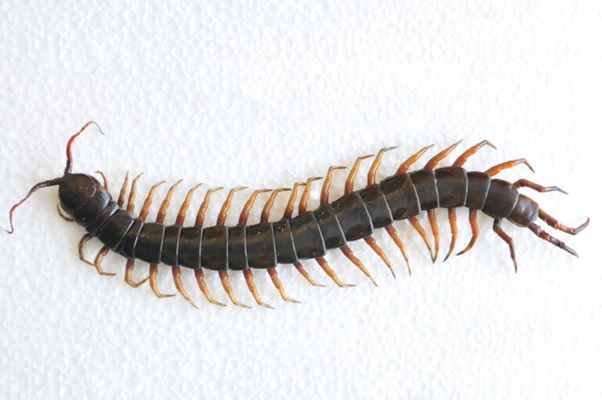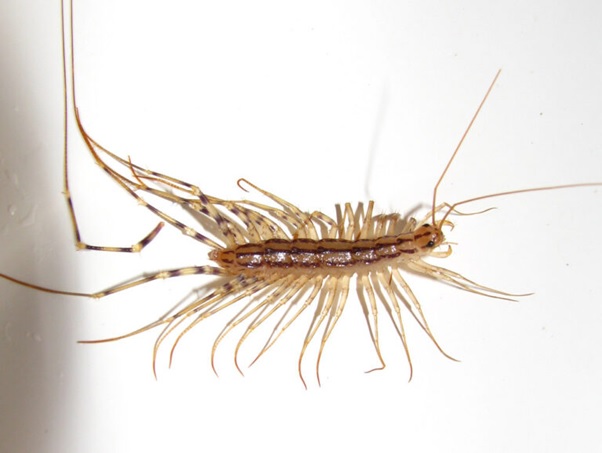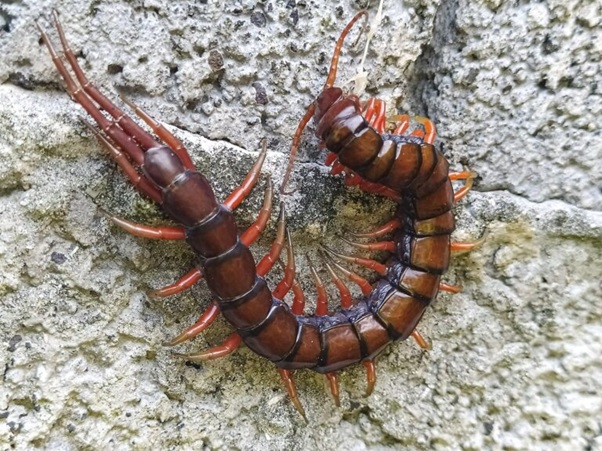House centipedes are characterized by their worm-like bodies, numerous legs, elongated and sensitive antennae, ranging from yellow to dark brown hues, and small mouths housing venom glands. In fact, they can possess anywhere from fifteen to seventy-seven pairs of legs, which they utilize for swift movement across surfaces and vertical climbing.

But are centipedes prone to biting if they come into close proximity with humans? While centipedes are capable of biting and delivering venom, they typically pose no significant threat to people or animals. While bites might induce mild soreness or redness, no severe health complications have been directly associated with centipede bites. However, this doesn’t warrant a cavalier attitude towards centipedes. Discover more about these creatures, their natural predators, and why taking matters into your own hands to eliminate house centipedes isn’t advisable, along with the advantages of professional centipede and pest control in South Portland, below.
Five Lesser-Known Facts About Centipedes
Here are five intriguing facts about those elusive centipedes lurking in your basement:
1. A centipede’s age correlates directly with its leg count. This phenomenon occurs because centipedes can regenerate lost legs during molting, potentially increasing their leg count through more frequent molts. The process may require multiple molting cycles for a centipede to fully regain the use of all its legs if some were lost during molting.

2. As one of the oldest animal groups, centipedes boast a lineage dating back over 400 million years.
3. Contrary to popular belief, when motivated to capture prey or escape from predators, centipedes exhibit remarkable speed. Thanks to their segmented bodies, multiple pairs of legs, and waxy exoskeletons, centipedes can traverse more than a foot of ground in less than a second.
4. Centipedes have a diverse diet, consuming a wide array of prey. Larger centipedes have little difficulty consuming prey much larger than the insects, worms, roaches, and mollusks consumed by smaller species.
5. Some species of centipedes, including the common house centipede, can live for up to six years. Despite the intriguing history surrounding them, having these enigmatic creatures lurking in your basement is likely not desirable.
Who Preys on Centipedes in Nature?
What are the natural predators of centipedes? Birds, specific spiders, mice, frogs, beetles, and snakes are among the species that prey on centipedes. Larger centipedes, in turn, prey on various animals, including frogs and spiders. Predatory frogs and spiders typically target young or weaker centipedes that are unable to evade capture.

Why Killing House Centipedes Is Ill-Advised
If you encounter a house centipede indoors, is there a recommended method for removal? While it might be tempting to take matters into your own hands, it’s best to refrain. The presence of a few house centipedes does not necessarily indicate a problem.
In fact, they play a crucial role in controlling populations of spiders and roaches, serving as natural predators. Moreover, unlike other pests, centipedes do not construct nests or webs, alleviating concerns about secondary pest infestations. However, a situation can quickly escalate if a full-blown colony of house centipedes is left unchecked, potentially attracting other unwanted pests.
Given that centipedes can live for up to a decade, allowing them to linger in your home is undesirable. Even if the presence of centipedes hasn’t become a major concern, it’s advisable to seek professional assistance. House centipedes may not offer foolproof protection against harmful pests like cockroaches, and their presence could signify a more significant pest issue.
